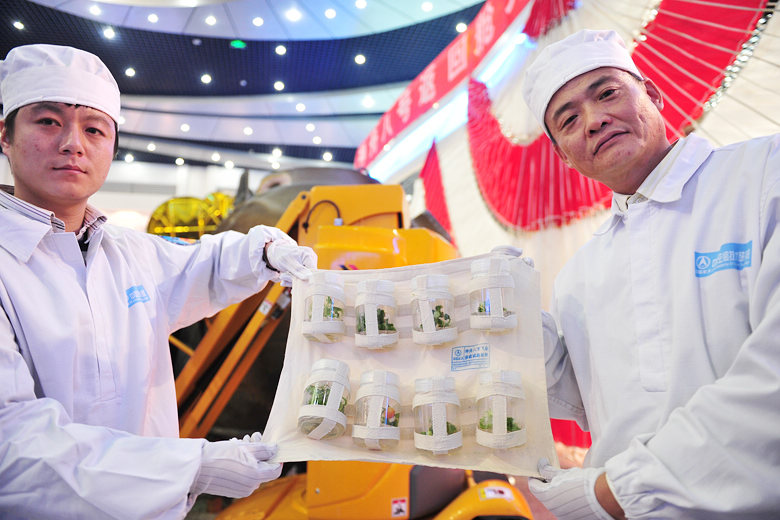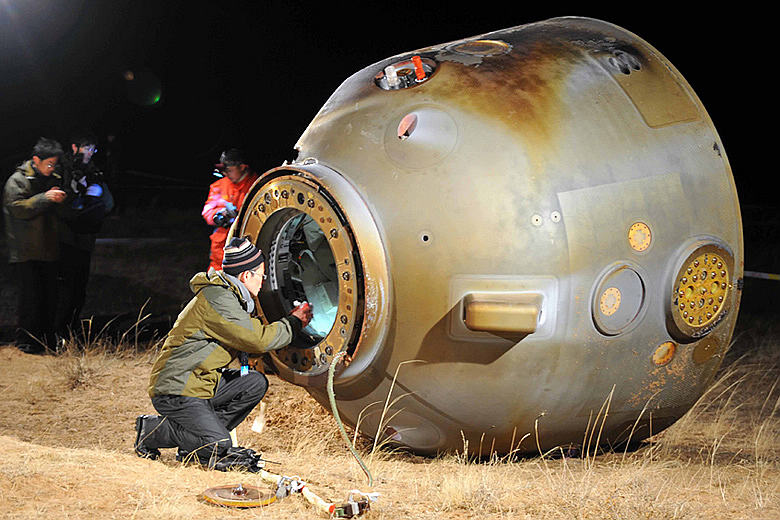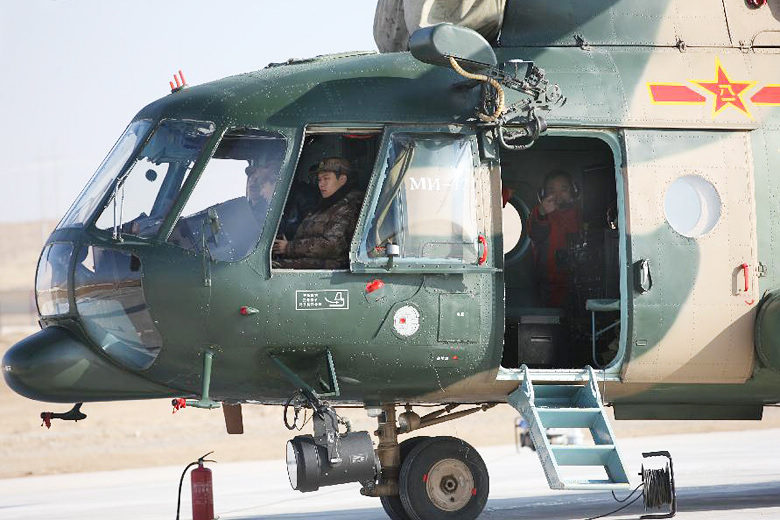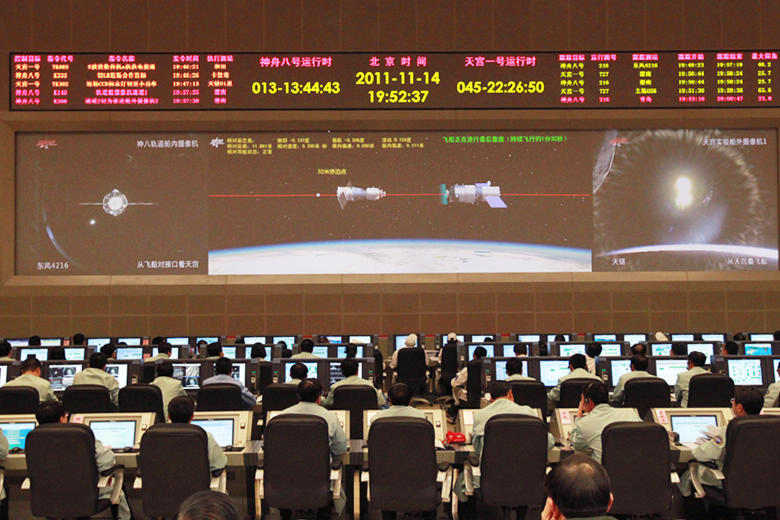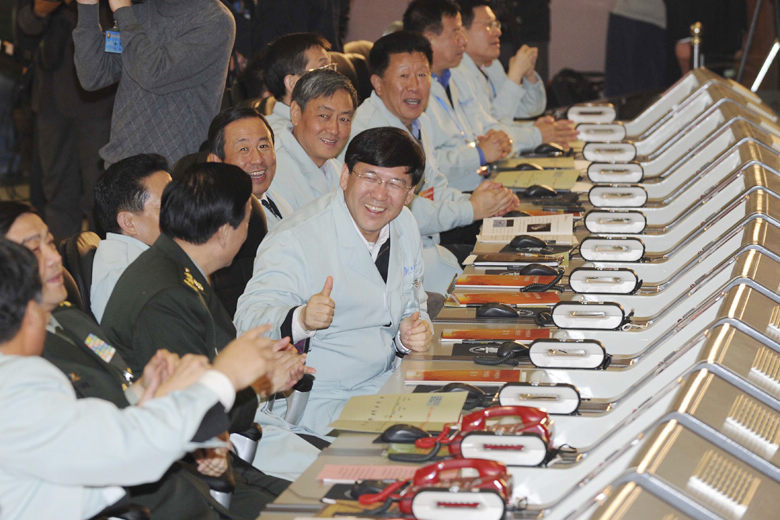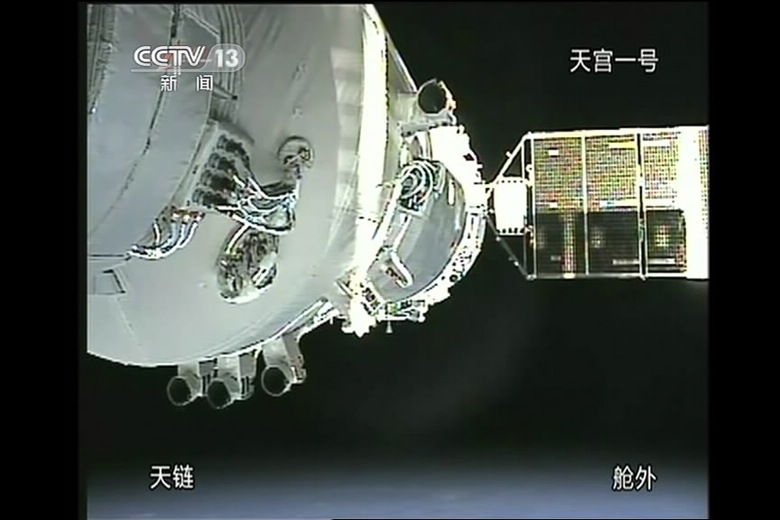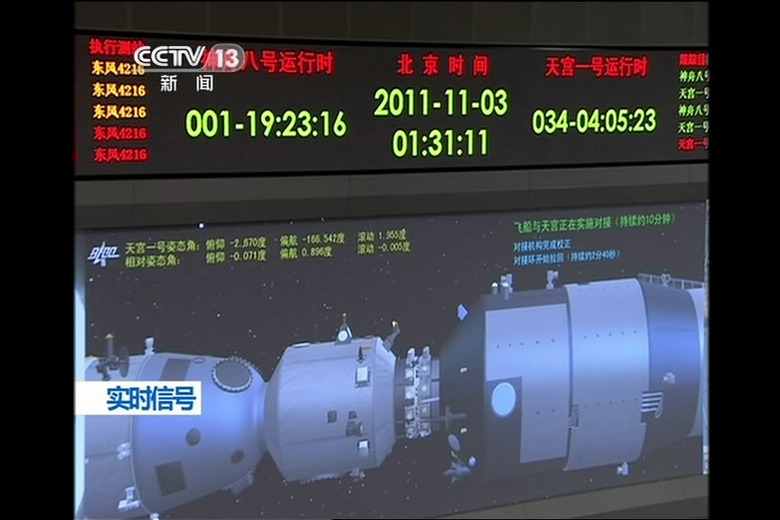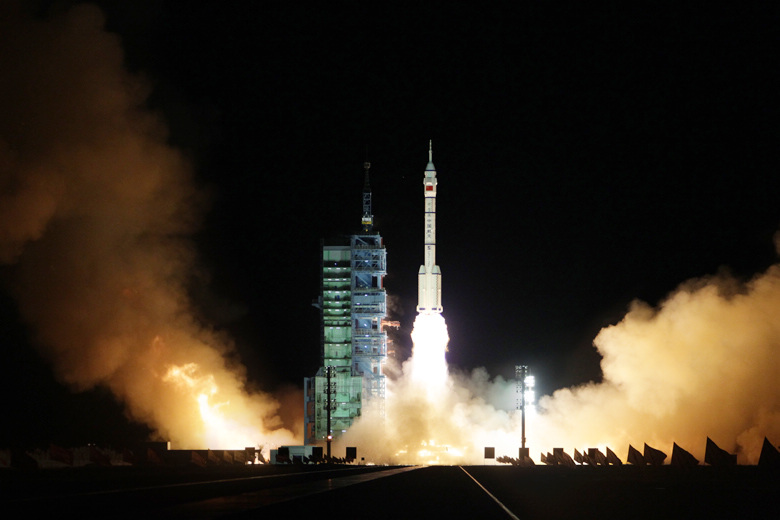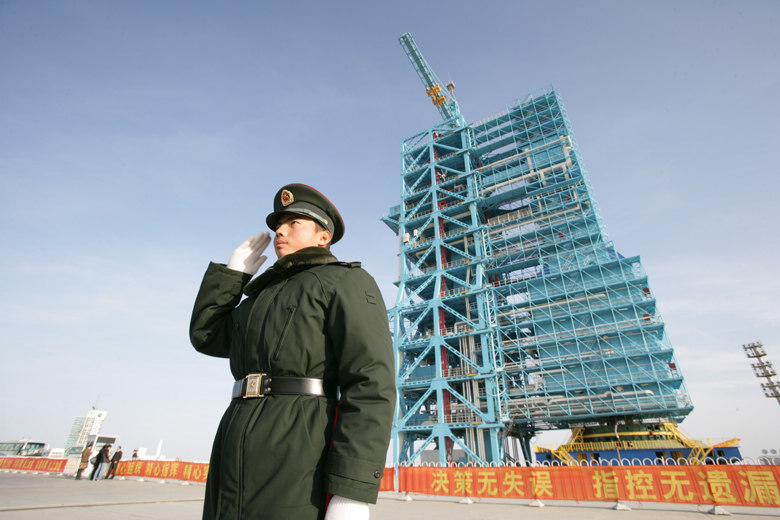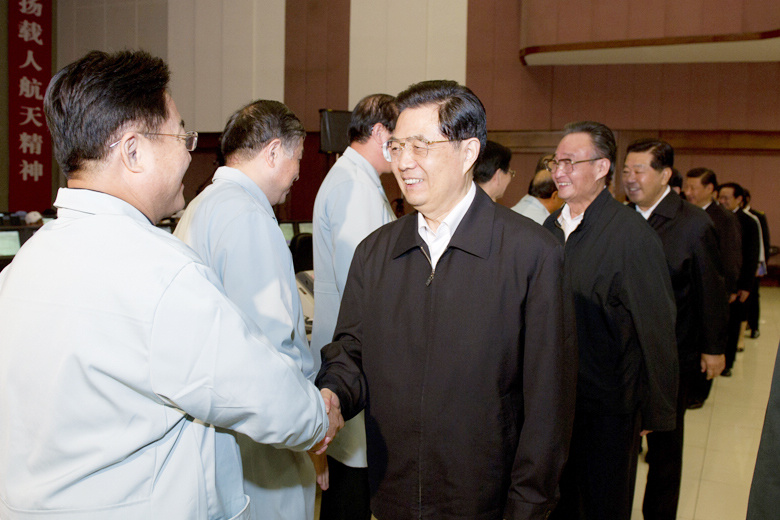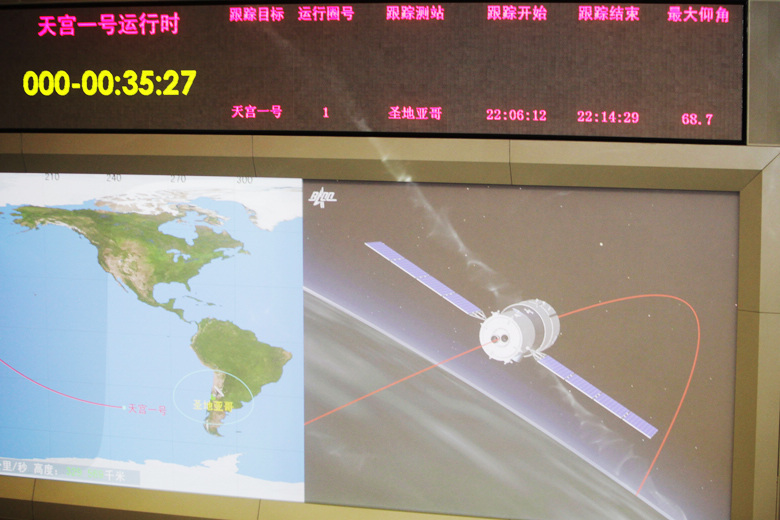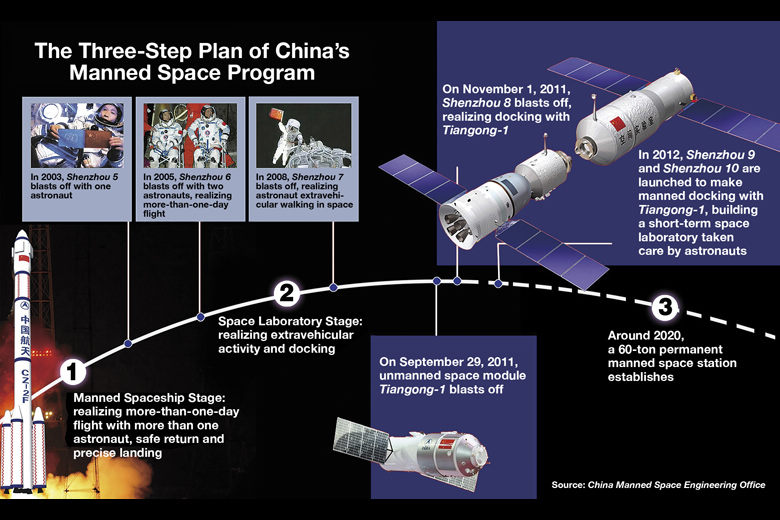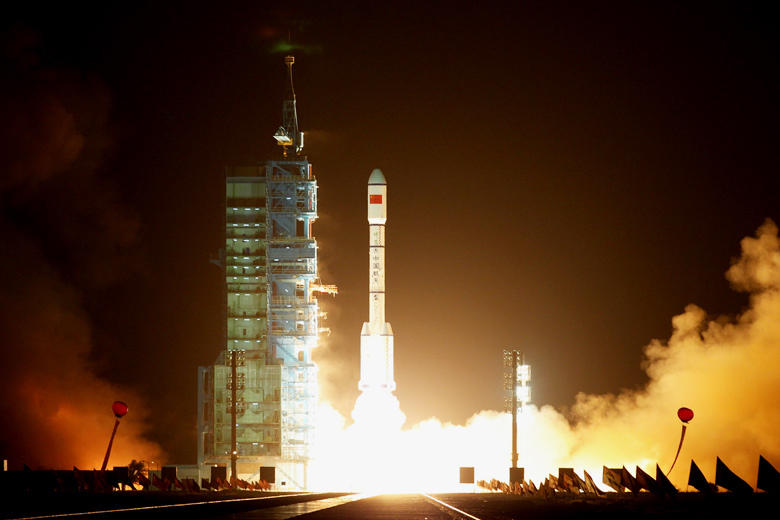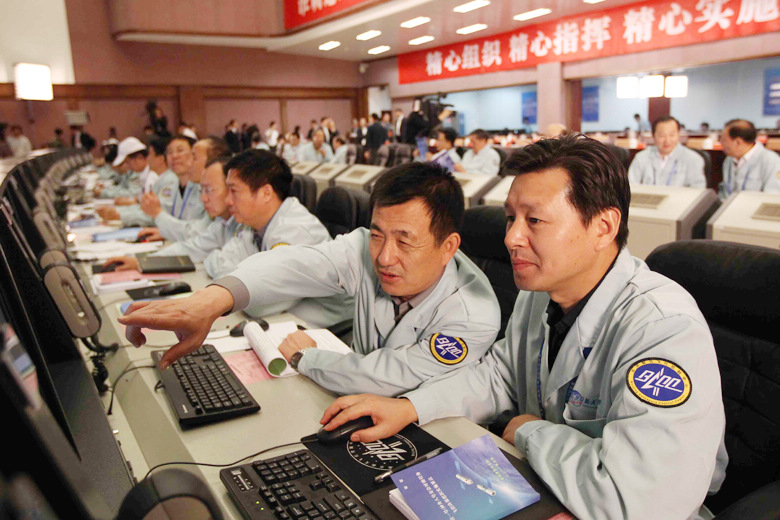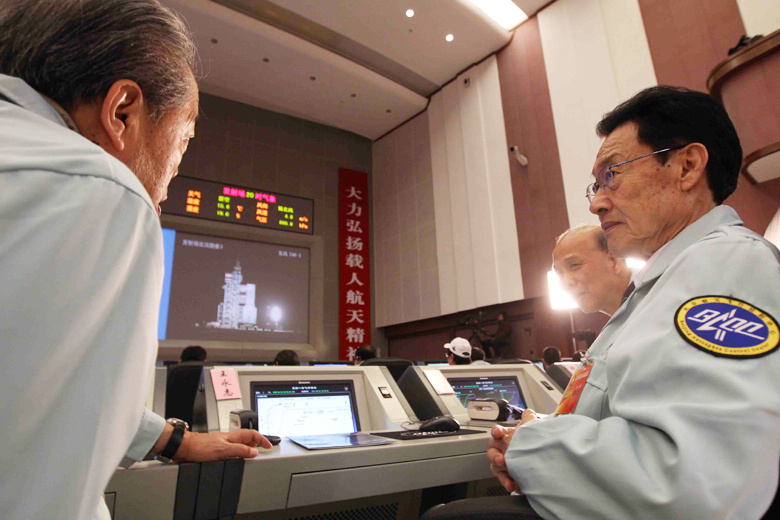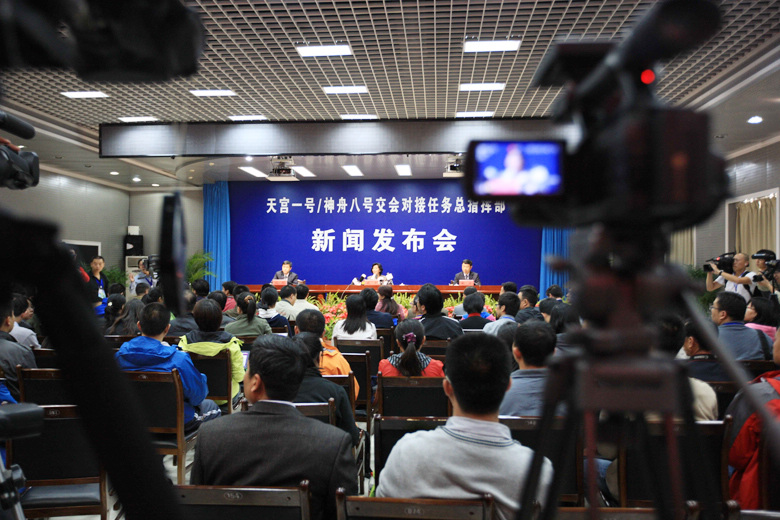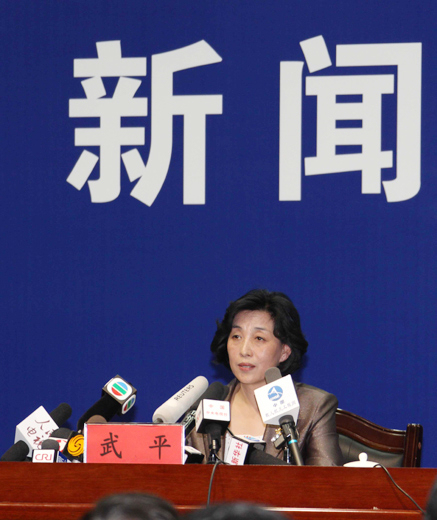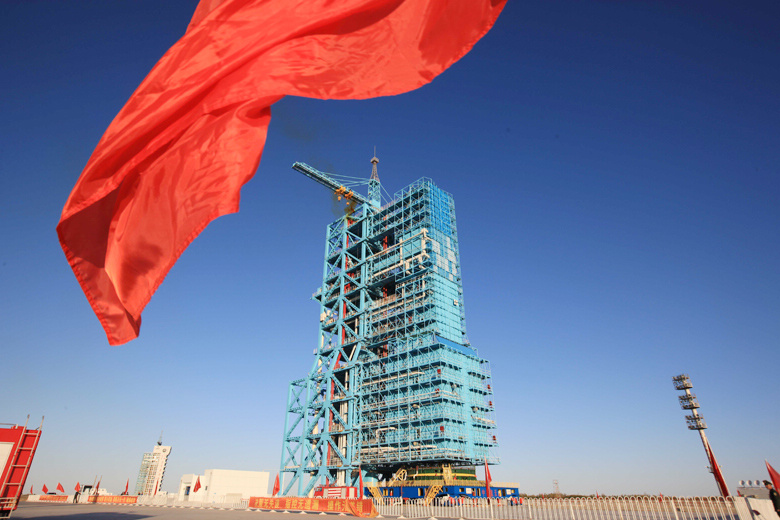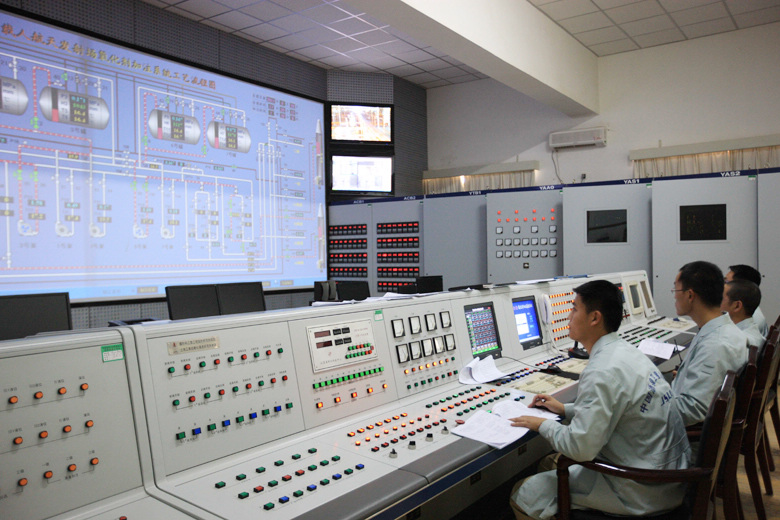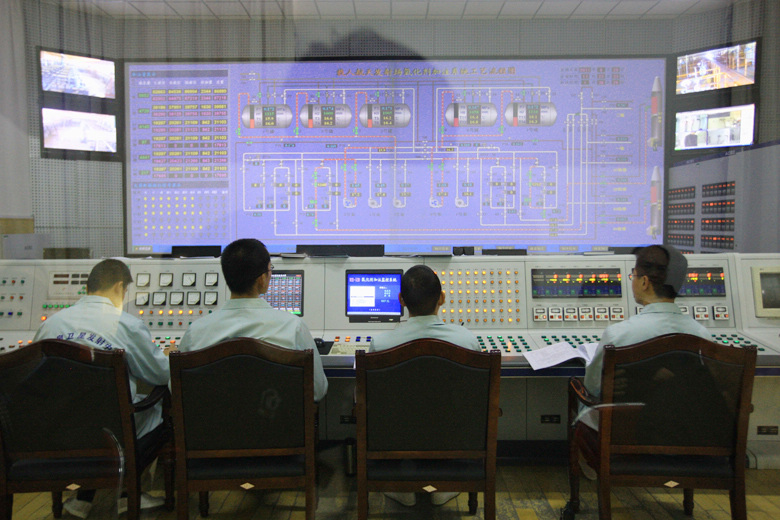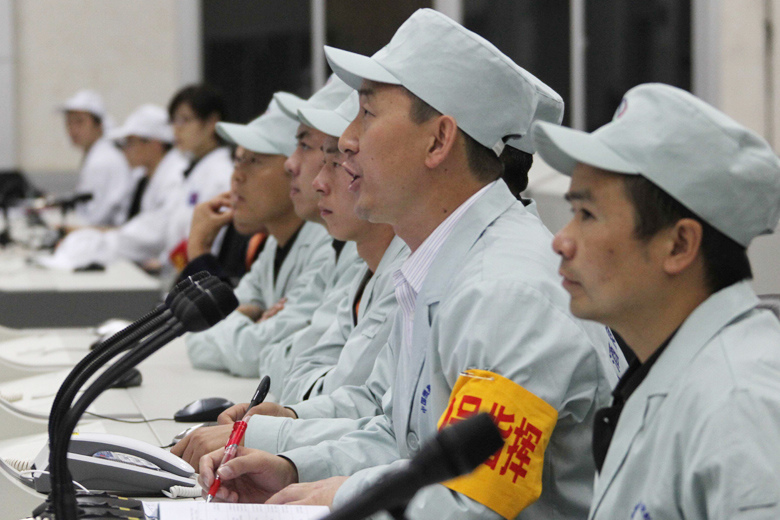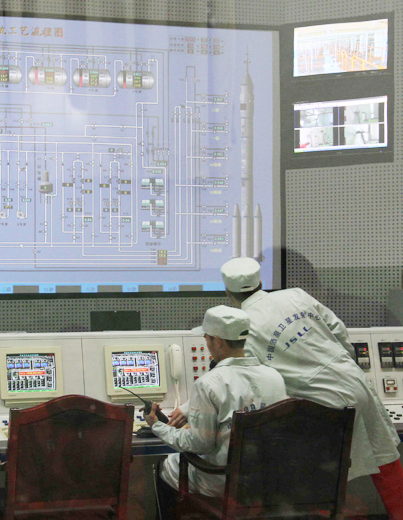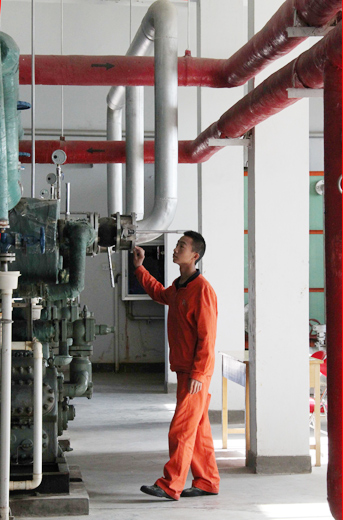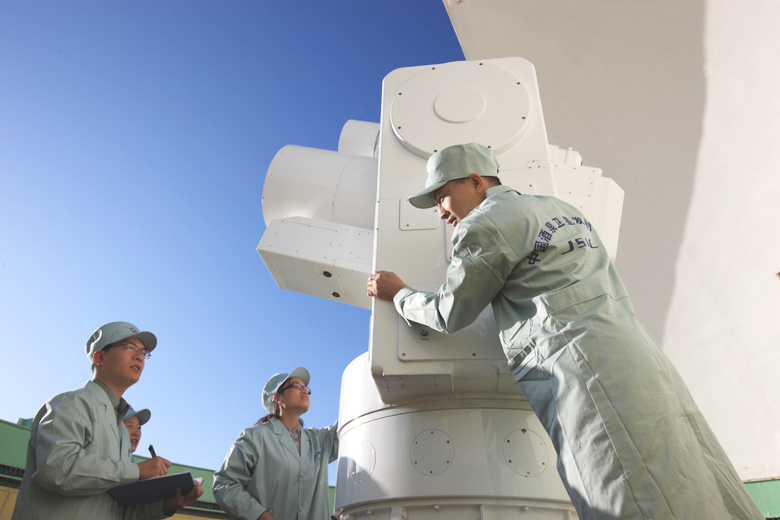/
- WELL DONE: Researchers show off a set of zero-gravity flowering and fructification experimental devices retrieved from the re-entry capsule of China's unmanned spacecraft Shenzhou-8 in Beijing on November 21. The unmanned spacecraft returned to Earth on November 17 after completing China's first-ever space docking mission (XINHUA)
- IN-TIME CHECK: A staff member examines the interior of the re-entry capsule of Shenzhou-8 after its landing by parachute in Siziwang Banner of north China's Inner Mongolia Autonomous Region on November 17 (XINHUA)
- REHEARSAL: Members of an aerial search team hold a rehearsal in a helicopter in anticipation of the return of the Shenzhou-8 unmanned spacecraft. The drill is conducted at the main landing field in north China's Inner Mongolia Autonomous Region on November 16 (XINHUA)
- MONITORING: Staff monitor the second docking procedure between the Shenzhou-8 unmanned spacecraft and the
Tiangong-1 space lab module from the Beijing Aerospace Control Center on November 14 (XINHUA) - JOB WELL DONE: Staff at the Beijing Aerospace Flight Control Center celebrate with each other after the successful docking of Shenzhou 8 with Tiangong-1 in the early morning on November 3 (XIE HUANCHI)
- KISSING EACH OTHER: A video grab taken from the China Central Television on November 3 shows the Shenzhou 8 unmanned spacecraft docking with the Tiangong-1 space lab module (XINHUA)
- CONNECTING: A video grab from China Central Television shows a 3D animation of the Shenzhou-8 unmanned spacecraft docking with the Tiangong-1 space lab module on a monitor at the Beijing Aerospace Control Center on November 3 (XINHUA)
- GOING INTO SPACE: A modified model of the Long March-2F rocket carrying the unmanned spacecraft Shenzhou 8 blasts off at 5:58 a.m. on November 1 from the launch pad at the Jiuquan Satellite Launch Center (WANG XIANG)
- SHOWING SALUTE: A soldier stands before the launch pad at the Jiuquan Satellite Launch Center in northwest China's Gansu Province on October 30 (WANG XIANG)
- CONGRATULATIONS: Chinese top leaders Hu Jintao, Wu Bangguo, Jia Qinglin, Li Changchun, Xi Jinping, Li Keqiang and Zhou Yongkang shake hands with the staff after the successful launch of the Tiangong 1 space lab module at Beijing Aerospace Control Center on September 29. China's first space lab module blasted off at 9:16 p.m. Beijing Time (1316 GMT) on that day at the Jiuquan Satellite Launch Center in northwest China's Gansu Province as the nation envisions the coming of its space station era in about ten years (XINHUA)
- A CLOSER LOOK: A 3D animation of Tiangong 1 space lab module is shown on a screen at Beijing Aerospace Control Center after the space module blasted off on September 29 (XINHUA)
- MILESTONES: China's space program is being carried out in three phases culminating in the establishment of a permanent space station (CNSPHOTO)
- BLASTOFF: A Long March-2FT1 carrier rocket loaded with Tiangong 1 unmanned space lab module blasts off from the launch pad at the Jiuquan Satellite Launch Center in northwest China's Gansu Province, at 9:16 p.m. Beijing time on September 29 (XINHUA)
- STANDBY: Staff members conduct preparations before the launch of Tiangong 1 space lab module at the Beijing Aerospace Control Center on September 29 (XINHUA)
- LEGACY: Wang Yongzhi (right), former chief designer of China's manned space project, is seen at the Beijing Aerospace Control Center on September 29 (XINHUA)
- MEET THE PRESS: A press conference on China's first space-docking procedure is held on the afternoon of September 28 (XINHUA)
- BRIEFINGS: Wu Ping, spokeswoman for China's manned space program, briefs media at a press conference on the afternoon of September 28 (XINHUA)
- FINAL COUNTDOWN: The red flag flies at the Jiuquan Satellite Launch Center on September 28. Fuel has been injected into the Long March-2FT1 carrier rocket in preparation for the launch of the Tiangong 1 space lab module (XINHUA)
- OXDIZER INJECTION: Technicians conduct oxdizer injection procedures for the Long March-2FT1 carrier rocket at 5:20 p.m. on September 28 (XINHUA)
- FUEL INJECTION: Staff workers observe fuel injection for the Long March-2FT1 carrier rocket on September 28 (XINHUA)
- JOINT TEST: Ground crew technicians take part in a joint test on September 28 (XINHUA)
- ADJUSTMENT: Technicians work to adjust the injection system signal at the Jiuquan Satellite Launch Center at 10:50 a.m. on September 28 (XINHUA)
- EXAMINATION: A technician examines fuel facilities at the Jiuquan Satellite Launch Center at 10:30 a.m. on September 28 (XINHUA)
- MAINTAINENCE: Technicians check equipment at the Jiuquan Satellite Launch Center on September 27 (XINHUA)
|
